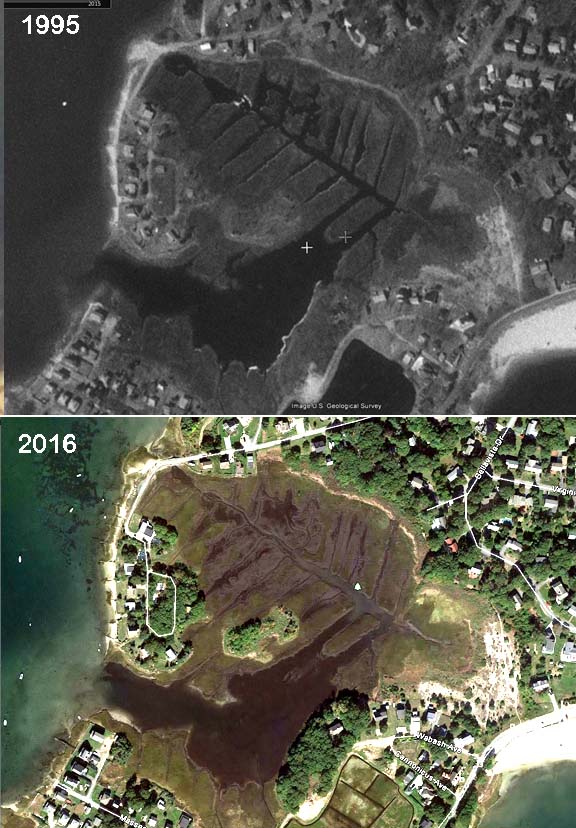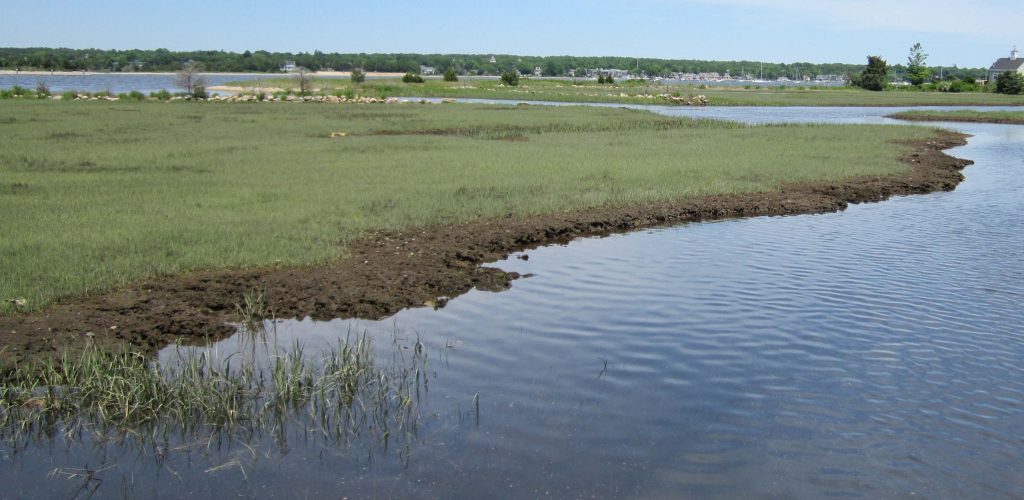Last year we received a call from a Bourne resident concerned about a die-off of vegetation in the Patuisset salt marsh in Bourne. A review of aerial images shows a continuous loss of the marsh over many decades, but the rate of loss appeared more pronounced during the past decade. The March 1995 and October 2016 aerial photographs of the Patuisset marsh in Fig. 1 show a stark difference in both channel widths, and the amount of vegetation near the marsh channel banks.

Fig. 1. Comparison of the extent of Patuisset salt marsh in Bourne between March 1995 (top), and October 2016 (bottom). Note both the widening of channels, and the dramatic loss of vegetation away from the channels.
Recently CZM’s South Coast Regional Coordinator, Dave Janik, provided these photographs of an apparent die back of vegetation away from the creek banks of a salt marsh in Mattapoisett (Fig. 2).

Fig. 2. Loss of vegetation along a salt marsh bank in Mattapoisett, observed June 21, 2017. This pattern of loss is consistent with damage caused by the purple marsh crab. Click to enlarge. Photo credit: Dave Janik.
As noted in the Buzzards Bay Coalition’s article Study shows Westport Rivers losing salt marshes at an accelerating rate, and our own posting, the loss of salt marshes can occur for many reasons. Since the last ice age, sea level rise has caused the continued loss or migration of salt marshes inland, but at many sites, new losses exceed that expected from sea level rise alone. Studies elsewhere in the region of rapid marsh loss and die-off have pointed to causes that include population explosions of the purple marsh crab (Sesarma reticulatum) and nitrogen pollution. The articles below have information about the subject for a general audience. If you know a site in Buzzards Bay with salt marsh die-off, please email photographs or information to tracy.warncke@state.ma.us.
Additional Reading
The Not-So-Mysterious Loss of Salt Marshes and Ecosystem Services